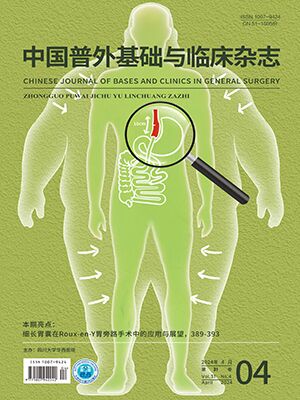Objective To investigate the correlation among lymph node metastasis and clinical features, postoperative survival rate in rectal cancer.
Methods Seventy-nine patients who had accepted total mesorectal excision (TME) were collected, and the correlation among their clinical features (including gender, age, tumor size, gross type, depth of infiltration, histology type, differentiated degree and the level of blood serum CEA), lymph node metastasis, and postoperative survival rate were analyzed.
Results There was significant correlation between six factors (namely the tumor size, gross type, depth of infiltration, histology type, differentiated degree and the level of blood serum CEA) and lymph node metastasis in single factor analysis. However, multivariate analysis showed that only gross type of tumor and depth of tumor infiltration were related to lymph node metastasis. The postoperative survival time of 43 non-metastasis cases was remarkably longer than that of 33 cases with lymph node metastasis (χ2=18.806, P=0.000), and it was longer in 22 cases with <4 lymph nodes metastasis than that of 11 cases with ≥4 lymph nodes metastasis (χ2=4.659, P=0.031).
Conclusion In rectal cancer patients the clinical features can reflect the condition of lymph node metastasis in a certain extent, and it can help doctors to evaluate the lymph node metastasis and prognosis.
Citation: LI Defu,ZHANG Min.. Analysis of Lymph Node Metastasis and Clinical Characteristic in Rectal Cancer (Report of 79Cases ). CHINESE JOURNAL OF BASES AND CLINICS IN GENERAL SURGERY, 2008, 15(9): 652-655. doi: Copy




